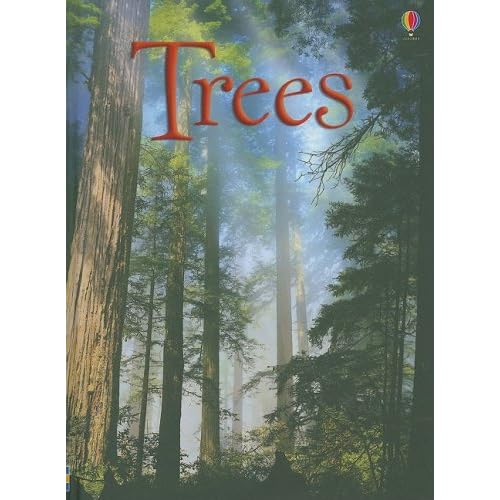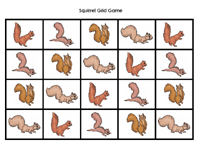We had a week of exploring the habitats of the world which led to lots of crafty fun. We talked about where we live (in a house, a place we can sleep, be safe and eat) and then I asked the question where animals live and we came up with lots of answers: in a tree, in a pond, in our garden, underground, in the sea, deserts, jungles etc.
We read the following books as an introduction to our studies:
This is a simple picture book with six different habitats and vivid drawings of animals that live in that habitat. It is a seek and find book which engages your little one in hunting for the creature.
We also used this non-fiction title from Bobbie Kalman
Our library didn't have a great selection but there are lots of books out there on specific habitats like the desert, forest, Arctic etc.
Day One: Tree Habitats
As we already had this wonderful title The Tree in the Ancient Forest from our Tree study - It made sense to use it as our starting point for exploring animals that live in trees/forests.
After reading this beautifully illustrated book - I printed off pictures of the animals that live in the tree and we created a tree habitat picture. I sketched a picture of a large tree on a long piece of paper and Adventure-man painted it and then we pasted on the pictures.
He also played on Scholastic's Magic Schoolbus Habitat Match-up and on FossWeb's Where Does It Live? The latter game may work better as a review of different habitats but I used it as a jumping off point for talking about different habitats and animals.
You can download the clipart and my day 1 plan here.
Day 2: Desert Habitats
We watched these videos on deserts and desert habitats:
This is a gallery of desert photos:
This is a video of desert wildlife:
This is a video on desert cacti:
We then re-read our book Desert Giant and again I printed out animal images to use for our craft project.
Our craft was done on cardboard; we painted the sand yellow and sprinkled glitter all over, painted the sky blue and stuck on cotton wool clouds. The cacti were made out of playdough and we stuck little pieces of broken spaghetti onto the cacti for the thorns. And finally we stuck our animals on. It turned out really well and we had fun with this.
We enjoyed looking for animals in The Great Animal Search. It is divided into different habitats and is a great way to introduce different animals.
We then played this desert habitat online game from Exploring Nature.
Other resources:
Food Chains Card games - provides animal cards with relevant information on each animal. Includes different habitats.
Everything Preschool: desert themed resources
Making Learning Fun: more desert themed projects and resources
Make a desert diorama
You can download my Day 2 plan and clip art here.
Day 3 Pond Habitats
I have to admit that I chose this because I knew I could get some great resources online.
So I downloaded some excellent resources from Homeschool Creations and 1+1+1=1 . All the preschool/kindergarten pond resources you could want can be found there.
There was a nice online game where Adventure-man could create his own pond and he enjoyed playing that.
Here's another from the Scottish National Heritage pond game you can use.
Our pond craft was made from a shallow box, painted blue with glitter sprinkled and I printed off templates of lily pads, frogs, ducks and turtles from here and we stuck them on. I made a dragonfly from pipe cleaners and tissue paper. I got the idea from The Lazy Stay-at-Home Mommy - hers is way more attractive and elaborate than ours - so do go to her blog to get some creative ideas for your pond!
We explored a little more about frogs and their life cycle.
We watched a couple of helpful videos:
This is a classic frog live cycle video from Sesame Street.
This is another good animated version of the frog life cycle.
This video uses footage of real tadpoles growing into frogs.
We also made a frog life cycle wheel. Here is a worksheet you can use from Have Fun Teaching.
And I've just discovered this great frog race game here!
For our active break we played at being animals in a pond - we were frogs hopping from cushion to cushion (exhausting!), pretending to be Kingfishers diving off the trees - they jumped off the sofa and had to catch a ball I threw in the air, they pretended to be dragonflies and fly around at great speed ducking and diving as quickly as possible.
Some other pond habitat resources and printables:
abcteach pond printables
Exploring pond habitats online
Pond animal flash cards and memory games
Pond printables and ideas from PreK-8.
Circle Fractions Frog craft from DLTK-kids
Making a tadpole puppet that transforms into a frog
Day 4 The Arctic
The last habitat we explored was the Arctic. We discussed what the Arctic was like, looked for it on a map and then watched this video on Arctic animals.
We sang this song about Arctic animals.
I printed this set of Arctic animal cards (from The Pinay Homeschooler) and we played memory with them.
Our craft was made out of salt dough (and added glitter to it - yes we love glitter!) rolled it out in a rough shape to represent the snow and ice of the arctic. We had cardboard animals taped onto ice cream sticks and then stuck them onto our Arctic shelf.
More Arctic habitat resources:
Arctic animals file folder game
Arctic themed ideas
Arctic animal bingo
Diego's printable arctic animal ID cards
Great ideas from this Montessori inspired post for Arctic and Antarctic activities
Here are some helpful ideas or links for a study of other habitats:
Ocean Habitats
Prekinders Ocean Page
Learning Page - Great source of Ocean themed worksheets
DLTK-Kids - ocean themed craft
Ocean Themed Squidoo page - lots of colouring, craft and book ideas
Funschool - Ocean themed online games
Homeschool Creations Ocean Preschool Pack
1+1+1=1 Ocean printables
Nice introduction to the Ocean
Jungle/Rainforest Habitats
Basic simple information on Tropical Rainforests from Enchanted Learning
E-stories and online games
Colouring pages from The Living Rainforest
African Animals Montessori 3 part cards
Guess the rainforest animal Dot to Dot
PBS Jungle journey flash presentation
Rainforest science and activities from Homeschool-Activities
1+1+1=1 Rainforest Printables
Fabulous Rainforest Diorama from Confessions of a Homeschooler
More Jungle themed art at Totally Tots
Savannah Habitats
Printables from ABCteach
Grassland food web printable poster
Savannah animal identification online game
Pre-Kinders Safari Theme - lots of resources and helps!
African Animals colouring book

















































